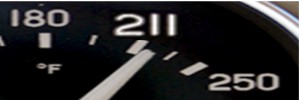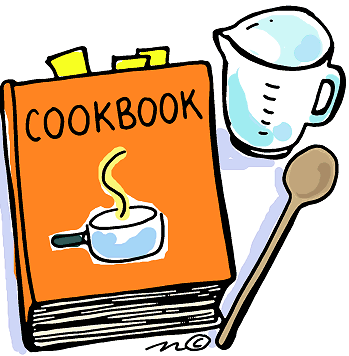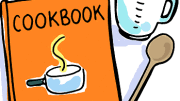Treyf – A Yiddish word meaning a food that is non-Kosher
Treyf (sometimes spelled treif or treyfe) is a Yiddish word used for something that’s not kosher. The word treyf is derived from the Hebrew word treifah, which appears several times in the Bible and means “flesh torn by beasts.” The Torah prohibits eating flesh torn by beasts, and so the word treifah came to stand in for all forbidden foods. A ham and cheese sandwich? Very treyf.
From ‘My Jewish Learning‘
This is the first in a series of occasional posts that are, to make a change from politics and savagery, all about food. More specifically it’s about making versions of well known foods that comply with Jewish dietary law.
First a bit of an introduction, some background and also an explanation of why there is a need to make kosher alternatives to some mainstream foods. I will not be giving such a long-winded introduction to every recipe but I will link back to this post for those who are interested.
There are many foods that non-Jews eat quite happily that are forbidden to Jews. Quite a few animals, even tasty ones, are banned from the kosher kitchen these include: pigs, camels, any carnivorous animals, reptiles, insects (except locusts because if you’ve got locusts you’ve got bugger all else to eat), birds of prey, rabbits and hares.
Animals that are permitted include cows, sheep and goats, but I’m pretty certain that giraffes are not kosher. Meat must also come from an animal that isn’t sick or injured or has been killed in front of its mother. Also meat must be free of blood, which is a sensible precaution in climates where the presence of blood in the meat may speed up decomposition of the meat. The biblical reason for avoiding the blood is that ‘the life is in the blood’. Oh and ‘roadkill’, even if its a kosher animal is not Kosher, the run over animal is treated by Jewish law in the same way as an animal that had been rent by wild beasts would be.
Some of the Kosher laws do indeed, I believe, relate to food safety as something like pork would spoil very quickly in a hot country with no refrigerators. There is an old English saying ‘if you not want your pork to mar, kill not your pig without the ‘R’‘ as the months without an ‘R’ in them are, in Northern Europe, hot ones where pork would soon become lethally infected with rot. Before we go on I have to say I’m not a Rabbi and if people want detailed information on Kashrut then ask a competent Rabbi.
Certain combinations of foods are also not permitted and the main combination that is forbidden is meat and milk mixed in the same meal. Many Jews who keep to the Kosher dietary laws leave at least a three hour gap between eating a meat meal and eating food containing dairy. We also have to have separate cutlery, pots, pans, flatware etc for either meat or milk meals. This is why Jewish kitchens, or at least our one, sometimes run out of storage space very quickly. Two sets of everything!
Fish is another area where the kosher diner has to be careful. Shellfish is absolutely forbidden, as is squid and similar sea dwelling creatures. Also any other sort of fish must have fins and easily detachable scales. Some Kosher fishmongers will leave a small piece of skin on the fish when they sell it so that the purchaser can check for themselves that the scales will detach easily.
I’ll try to get at least one recipe a month up on here in this series. Some of the meals are adaptations of general recipes where I’ve had to change one or two of the ingredients, some are ones that I’ve discovered while I’ve been ‘tinkering’ in the kitchen. I’ll be using my wife as a food tester in this series and ‘The Hungry Wife’ (I’m lucky that my wife likes my cooking) along with our toddler known as ‘small son’, will hopefully be giving their opinions of some of the dishes.
The reason why I’m starting this project is that I never used to be as observant of the Kosher laws as I am today and I used to eat a lot of things that I loved but now longer eat because they are forbidden. However that doesn’t stop me missing things like prawns, scallops, bacon or cheeseburgers so I looked for alternatives to the foods I missed but which complied with the kosher dietary rules. These recipes I discovered I thought deserved to be shared.
And so to the first recipe. Fake Prawn Toast.
Prawns are tasty, versatile and forbidden to Jews. I realised that there was a Prawn Toast shaped hole in my dietary life so I decided to work on an alternative. I was looking for something that looked just like the sort of prawn toast you get from a Chinese takeaway but without the prawns. This may also be a great alternative dish for those with shellfish allergies, you get the fishy-toasty loveliness without the danger becoming ill through eating prawns.
I’ve adapted this recipe from the BBC Good Food page and changed a few things, some to fit in with Jewish law and others because I preferred a different taste. I also used much thicker bread than the original because I prefer it and also because I wanted to use a thicker layer of coating than the recipe suggested. As this was a main course version of the dish I wanted something a bit more substantial on the bread front.
Here’s the ingredients. The original recipe ingredients are in italics on the right hand side. The kosher ones are on the left.
-
250gms poached skinless smoked haddock 2 cups Prawns
-
1 whole egg 1 egg white
-
1 clove garlic
-
3 teaspoons of soy sauce 3 tea spoons hot pepper sauce
-
1 tablespoon of potato flour 1 tablespoon cornflour
-
sprinkle salt
-
3 spring onions, chopped 2 spring onions
-
5 slices of bread 1” thick 8 slices white bread
-
1 red chilli deseeded bit of ginger (optional)
-
sesame seeds
-
dash of sesame oil
-
2-3 inches vegetable or sunflower cooking oil
Follow the method mostly as outlined in the original recipe. I didn’t take off the crusts or make the slices into dainty triangles as this was a main course portion and even my ‘very British teeth’ can deal with the crusts on fried bread.
1 Poach the smoked haddock in milk or water, until it is cooked, about 8-10 minutes from frozen. Shove everything except the bread, sesame seeds and cooking oil into a food processor and whizz it up or put it into a plastic jug and with a stick blender, turn the ingredients into a paste.
2 Cut five or six slices of bread., depending on how thick you are having the fish mixture. Each slice needs to be about 1” thick.
3 Spread the fish mixture on one side of the bread.
4 Sprinkle sesame seeds all over the coated side of the bread. Press it down to make sure the seeds stick well to the paste.
5 Fry the coated bread (uncoated side first) in vegetable oil in a frying pan. Fry each side in medium hot oil for about 45 seconds to a minute depending on how thick the fish coating is and how well done you like fried bread.
6 Serve and eat with noodles or whatever you want. We had veg chow mein.
I found that this was tasty and filling and although it wasn’t the exact taste of prawn, had a delicious amount of fishy-ness. I believe it helped to use a smoked fish since this enhanced the taste of the haddock when mixed with the other ingredients. I was quite pleased with this recipe and it turned out to be a quite acceptable alternative to real prawn toast.
Hungry wife says:
I liked this version, previous attempts were not to my taste, couldn’t eat two slices though as it is very filling. It didn’t taste like haddock, it did taste good.
Small son says:
They removed the crusts and red bits from mine, they seemed to think chunks of chilli would not be good for me, and the stick blender didn’t cope with those. I found the chow mein quite fun to eat and throw around, the toast stuff I ate up, it was different but that’s ok.


